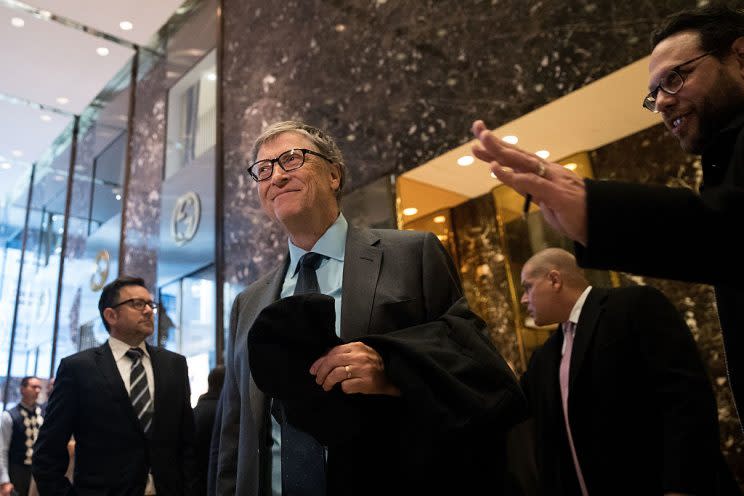It may be only 25 years before the world has its first trillionaire

With a reported US$75 billion to his name, Bill Gates is the wealthiest person in the world. But it may only be a matter of a 25 years before the Microsoft co-founder, or another of his ilk, becomes the inaugural member of trillionaires club.
The revelation comes from a new report from Oxfam International on global inequality.
The international aid organization said that the chasm between the ultra-rich continues to grow at an “alarming” rate, with the top 1 per cent gaining more income than the bottom 50 per cent over the last 25 years.
Oxfam pointed to Gates as evidence of this trend, noting that despite his “commendable” efforts to give much of his fortune away it has increased by more than 50 per cent, or $25 billion, since he left Microsoft in 2006.
“If billionaires continue to secure these returns, we could see the world’s first trillionaire in 25 years,” Oxfam predicted.
“In such an environment, if you are already rich you have to try hard not to keep getting a lot richer.”
A 2013 report from Credit Suisse suggested that there could be as many as 11 members of the trillionaires club within 60 years.
Oxfam dubbed our current economic climate as the “age of the super-rich” or a “second gilded age.”
The researchers said that part of the problem is that once these super-rich – or the 1810 individuals with a net worth of at least $1 billion — accumulate their fortune it “develops a momentum of its own.”
They noted that since 2009, the wealth held by the super-rich has increased by an average of 11 per cent per year, a rate much higher than the average saver, and now accounts for $6.5 trillion, or as much as the bottom 70 per cent of humanity.
“The super-rich have the money to spend on the best investment advice,” said Oxfam.
“Whether via hedge funds or warehouses full of fine art and vintage cars, the highly secretive industry of wealth management has been hugely successful in increasing the prosperity of the super-rich.”
Oxfam also found that some of the members of the billionaires club gained their fortune through hard work and talent, as much as one-third inherited their wealth and a further 43 per cent can linked to cronyism.
It also found that many of the super-rich use tax havens to keep their hands on their vast wealth, while others use it to influence policy, elections and lobby for lower taxes.
And while it may be exciting for one person to open their bank account in 25 years to see a 13-digit number, according to Oxfam, that may be bad news for the rest of us and especially those who may be struggling to get by.
“The huge fortunes we see at the very top of the wealth and income spectrum are clear evidence of the inequality crisis and are hindering the fight to end extreme poverty,” said the report.

 Yahoo Finance
Yahoo Finance 
